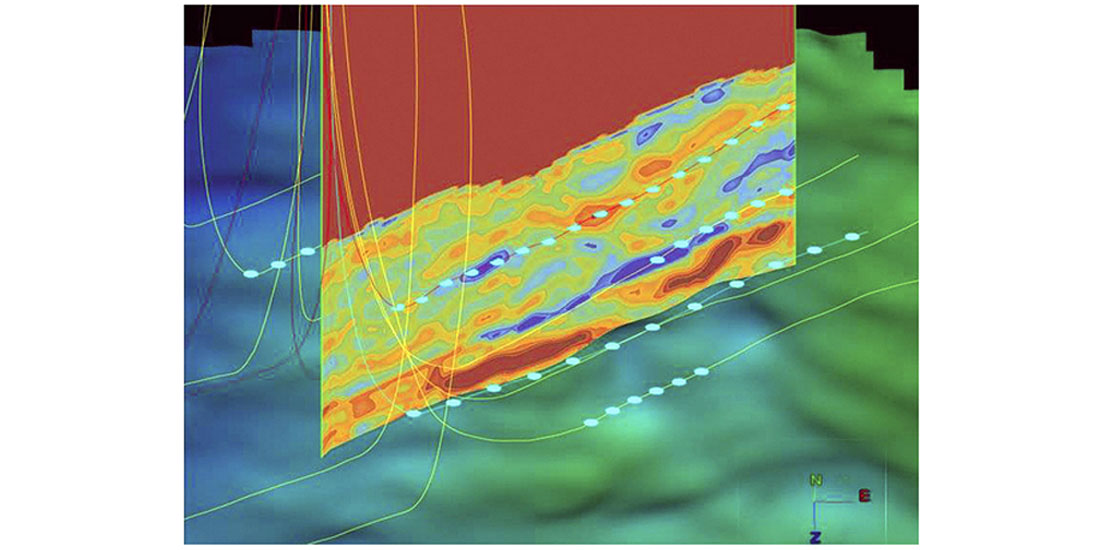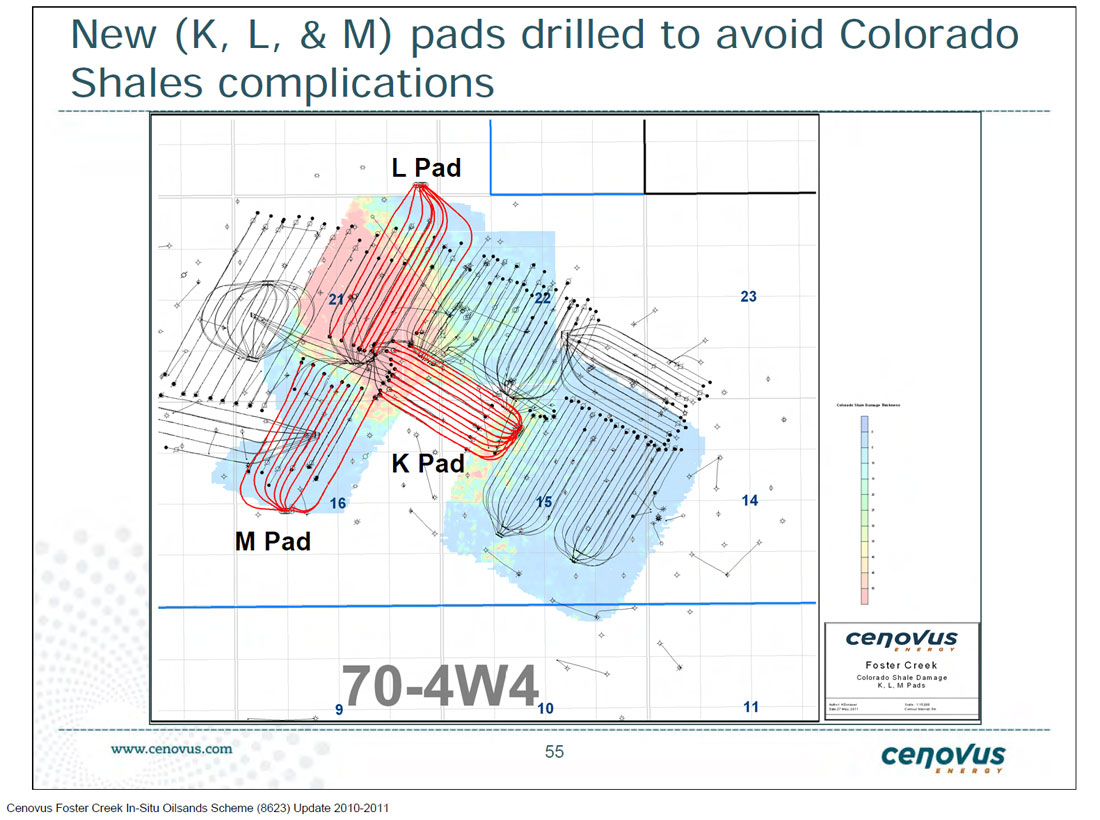This column, coordinated by the VIG Committee, will be oriented towards the demonstration, promotion, or encouragement of the value of integrated geophysics. This may include short technical notes, business cases, workflow examples, or even essays. The format of the column is purposefully open, relaxed, and flexible to allow a wide variety of discussion without unnecessary burden. The column will generally be written by persons on the VIG committees, however, all members of the CSEG are invited to submit a short value oriented article to the VIG committee through committee chair George Fairs (GFairs@ Divestco.com). Additionally, the VIG committee invites your letters. If you have a story, question, or comment about the value of geophysics, please send it on to George Fairs. We hope that the letters and columns that we publish are unique and different: tied together only by an interest in encouraging the value in our science and profession.
As a specific scientific discipline, the field of petroleum geomechanics could be classified as being particularly young, especially in contrast with the long history of physics, geology, and geophysics. The science of petroleum geomechanics, which is essentially the study of mechanical rock properties and earth stresses, has long lived in other disciplines in a sort of piecemeal way. Disciplines such as geological engineering, mining engineering, petroleum engineering, and geophysics all contain bits of petroleum geomechanics. However, none of them connect all of the dots under one umbrella. Petroleum geomechanics essentially came to be in the late 1970’s as a standalone discipline with a focus on how earth stresses and mechanical rock properties affect us in the oilfield, and then matured well into the 1990’s before it was recognized as an essential discipline (even though not by all).
When I was a graduate student in 2006, there was no formal Petroleum Geomechanics program at my university. I was fortunate to be able make a solid background by piecing together elements from courses in several different departments. There was even a bit of debate around which program a degree completed in petroleum geomechanics should fall under. Should it be Petroleum Engineering? Geology? Mining Engineering? Or Geophysics? In the end I received my degree in geophysics with a thesis on the integration of time lapse geophysics and geomechanics. I would still argue that not only is the realm of geophysics the best integrator of the principles of petroleum geomechanics, but their future is inextricably locked together… in that both fields need the other to advance. I will concentrate on two areas where the futures of these two fields are tied specifically to Canadian interests: unconventional resources exploration/exploitation (tight/shale oil and gas) and heavy oil exploration/exploitation (both Cold Heavy Oil Production with Sand-or CHOPS and In-Situ thermal recovery).
Unconventional Resource Exploration and Exploitation
One of the beautiful things about seismic is its ability to connect the dots, and to estimate, pre-drill, the properties about a specific formation. Another way to describe this is integration and prediction. In the conventional world, this takes the form of estimating depth to target, the height of a closure, the throw of a fault trap, and the volume of oil possible for a prospect. In the unconventional, delineating faults for drilling hazards, fractures for ‘sweet spot identification’, and rock properties such as Young’s Modulus/ Poisson’s Ratio/Density is the norm. Outside of 3D seismic, there is also the importance of microseismic monitoring of completions and oilfield activities. The value of geophysics is still a question mark to some within the industry despite all of these things that seismic can provide. Indeed, by definition, a resource play diminishes the need for in-depth geoscience work, in that the formation should have the same properties over a large area. Although all geoscientists know the fallacy of this assumption, geophysics has struggled to show value in a new unconventional market dominated by pad drills, lean processes, and a manufacturing mindset. The reality of the unconventional frame is that in a development mode, geophysics needs to provide engineering data, and in a quantitative form.
An example of adapting geophysics to the unconventional frame is Young’s Modulus (YM) and Poisson’s Ratio (PR). Completions engineers use this data, mostly from well logs derived from sonic, as direct inputs into stimulation modeling software. Stimulation modeling software is almost exclusively used to design stimulation programs in the unconventional (proppant size, density, fluid pumping rates, volumes, etc). In addition, most of this modeling takes place at the service company (check with your completions engineer for your own company’s procedure). YM can be used to calculate the width of a crack into a certain formation for proppant size and density calculations. PR, on the other hand, is used to derive an estimate of the minimum horizontal stress within the wellbore, which will show which formations can break down more easily than others, or provide so-called ‘stress barriers’ to stimulation growth. YM, PR, and stress are often only dynamic, in these estimates, meaning that they are derived from a sonic wave without calibration to ‘static’ lab measurements or wellbore stress data. Geophysicists using both AVO and Inversion methods, coupled with lab testing, should be able to provide an estimate of these properties pre-drill, to target and high-grade areas best suited to stimulation (Figure 1). The literature of both the SEG and CSEG has many case studies of this as a starting point for those interested. However, the utilization of these results by completions engineers is by no means a guarantee, nor is it likely to become common-place without more dialogue and force on the part of geophysicists.

In addition to rock properties, the ubiquity of microseismic in the development of unconventional resources has been well established in the past decade. Microseismic monitoring can be used to set well spacing, completion stage spacing, and also to characterize the stimulation characteristics of the formation (among other uses). At most oil companies, however, microseismic does not live in the geophysics domain. Most times, microseismic services have been bundled with the completion. Meaning that not only is the geophysicist not in control of contractor choice, but the processing is often completed immediately, with only wellbore velocity data, and presented as a completed product without much (or any) reprocessing of results. Recent literature is full of examples of uncertainty, location error, and pitfalls of microseismic processing. Again, geophysicists are often expected to force themselves into the process, as opposed to directing it.

The promise of moving geomechanics from the wellbore 1D modeling to full 3D modeling, integrated with reservoir simulations, has been slower in coming than some had hoped (myself included). The issues with this are many, including problems with scaling, calibration of key properties such as horizontal stresses, and the lack of widely available software for 3D modeling. In addition to this, recent research has shown the ability of microseismic to define geomechanical properties during stimulation, and to characterize the changes in the stress state and rock properties that occur during and post stimulation (Figure 2). Microseismic is inherently a time lapse process. To think about the importance of this, consider the problem: after wells are stimulated, the original 3D seismic shot pre-stimulation is most likely no longer correct in a rock property sense. Microseismic data coupled with geomechanics is a way of estimating those changes through time.
Heavy Oil Exploration and Exploitation
Time lapse seismic (4D) is the only reliable method of monitoring reservoir and caprock changes in both CHOPS and in-situ thermal recovery methods away from the wellbore. Geophysics coupled with geomechanics is a necessity in enhanced recovery simply for public safety reasons: given the irregular nature of the overburden in the oil sands region, complex stress state in the near surface, a history of overburden instability, or in the worst case, fissures opening to surface (see Total Joslyn Creek or CNRL’s recent troubles at Primrose). Moving beyond this, however, geophysics coupled with geomechanics in this domain can provide infill drilling locations, areas of bypassed pay, and zones to avoid for wellbore stability considerations (Figure 3) in both CHOPS and in-situ operations. Given the current state of CHOPS and in situ reservoir modeling, there is much room for improvement by integrating time lapse seismic attributes, geomechanical information, and a more complex overburden, especially for nearer surface in situ projects. In all of these examples, geomechanical modeling needs seismic data to make more accurate and meaningful models. Similarly, geophysics needs geomechanics to relate to the distinct engineering disciplines that we are working to optimize.

The Future is Bright
The key to 3D geomechanical modeling in the future will be integration of seismically and microseismically derived estimates of rock mechanical properties such as YM and PR. Also, we need estimates of horizontal stress ratios and how those attributes change in the time lapse domain. In much the same way that seismically derived time lapse attributes have aided the calibration and building of reservoir models offshore, seismically derived rock properties and estimates of stress coupled and calibrated with a 3D geomechanical model are the next step toward better completions, reservoir modeling, and reservoir monitoring. We have only begun to tap unconventional resources, and future EOR and recompletion opportunities are many.
The future for geophysics is quite bright in this sense, both as a predictor and a monitoring tool. For our part, geophysicists need to take an active role in demonstrating the ability of seismic to estimate, delineate, and monitor quantitative data valuable to engineers through time. Through this approach, the interaction between engineers and geophysicists will hopefully become more of a two way street.
Acknowledgements
I would like to thank the CSEG VIG committee for valuable feedback on grammar and content.
References
Cenovus Foster Creek 2011 Progress Report (8623), Energy Resources Conservation Board (now Alberta Energy Regulator or AER). http://www.aer.ca/data-and-publications/activity-and-data/in-situ-performance-presentations
Monk, D., Close, D., Perez, M., and Goodway, B. (2011) “Shale Gas and Geophysical Developments”. CSEG Recorder. Vol 36 No 1. January 2011.
Vasudevan, K. and Eaton, D. (2011) “Hydraulic Fracturing: Coulomb Failure Stress in Fracture Networks”. CSEG Recorder.Vol 36 No 9. November, 2011.











Share This Column